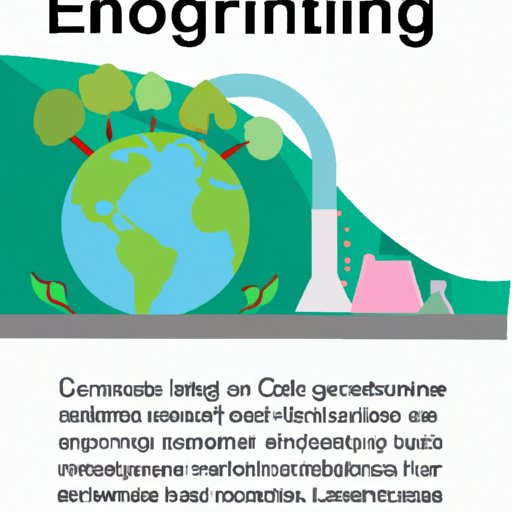Introduction
Environmental science is a multi-disciplinary field that focuses on understanding the interactions between humans and their environment. It draws from a variety of disciplines, such as biology, chemistry, ecology, geology, physics, and sociology, to provide a comprehensive approach to studying the environment. Environmental science seeks to understand how human activities affect the environment and how these effects can be mitigated or reversed.
What is Environmental Science?
Environmental science is the study of how humans interact with their environment. It involves examining the physical, chemical, and biological processes that occur in the environment, as well as the impacts of human activities on these processes. Environmental scientists use a variety of methods to study the environment, including analyzing data from satellites, conducting field experiments, and conducting laboratory experiments. Environmental science also examines how human activities, such as the burning of fossil fuels, affect the environment.
Why is it Important?
Environmental science is important because it helps us understand how our actions affect the environment. By understanding the impacts of human activities on the environment, we can develop strategies to reduce or reverse these impacts. Additionally, environmental science helps us understand how changes in the environment can affect human health, which is essential for making informed decisions about public policy.

Exploring the Intersection of Environmental Science and Human Health
Environmental science has a direct impact on human health. For example, air pollution can negatively affect the respiratory systems of people living in polluted areas, while water pollution can lead to contaminated drinking water and increases in gastrointestinal illnesses. Understanding the effects of pollutants on human health is an important part of environmental science.
In addition, environmental science is also used to investigate the links between climate change and human health. According to the World Health Organization, “Climate change is expected to have wide-ranging and mostly adverse impacts on human health, particularly in the poorest regions of the world.” These impacts include increased risk of disease, malnutrition, and displacement due to extreme weather events and rising sea levels.

Examining the Impact of Climate Change on Ecosystems
Climate change is already having an impact on ecosystems around the world. Environmental science is used to assess changes in global temperatures, analyze changes in weather patterns, and examine the impacts of changing climates on species distributions. For example, according to a study conducted by the National Oceanic and Atmospheric Administration (NOAA), rising temperatures are causing some species of fish to migrate to cooler waters, while other species are being forced to adapt to warmer temperatures.

Investigating the Effects of Pollution on the Environment
Pollution is one of the most significant threats to the environment. Environmental science is used to understand the sources of pollution, such as industrial processes, agricultural practices, and transportation, as well as the types of pollution, such as air pollution, water pollution, and noise pollution. In addition, environmental science is used to analyze the long-term effects of pollution on the environment, such as the destruction of habitats and the disruption of food webs.
Analyzing the Benefits of Sustainable Agriculture
Sustainable agriculture is an important component of environmental science. Sustainable agriculture involves using practices that minimize environmental impacts while maximizing yields. Environmental scientists use a variety of methods to evaluate the benefits of organic farming, investigate more efficient use of resources, and analyze the role of technology in sustainable agriculture.
Investigating the Relationship between Environmental Science and Conservation Efforts
Conservation organizations play an important role in protecting the environment. Environmental science is used to understand the role of these organizations in conservation efforts and examine environmental protection laws. In addition, environmental scientists investigate different strategies for conservation, such as habitat preservation and reintroduction of species.
Conclusion
Environmental science is a multi-disciplinary field that studies the interactions between humans and the natural environment. It seeks to understand the impacts of human activities on the environment and how these effects can be mitigated or reversed. Environmental science is used to examine the intersection of environmental science and human health, the impact of climate change on ecosystems, the effects of pollution on the environment, the benefits of sustainable agriculture, and the relationship between environmental science and conservation efforts.
(Note: Is this article not meeting your expectations? Do you have knowledge or insights to share? Unlock new opportunities and expand your reach by joining our authors team. Click Registration to join us and share your expertise with our readers.)
